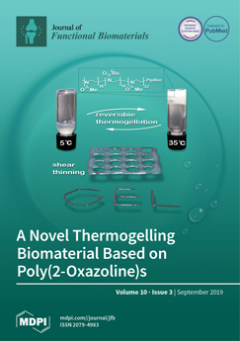Pseudomonas aeruginosa (
P. aeruginosa) infections may lead to severe damage of the cornea, mucosa, and skin. The highly aggressive nature of
P. aeruginosa and the rise in multi-drug resistance, particularly in nosocomial settings, lead to an increased risk for permanent tissue
[...] Read more.
Pseudomonas aeruginosa (
P. aeruginosa) infections may lead to severe damage of the cornea, mucosa, and skin. The highly aggressive nature of
P. aeruginosa and the rise in multi-drug resistance, particularly in nosocomial settings, lead to an increased risk for permanent tissue damage and potentially death. Thus, a growing need exists to develop alternative treatments to reduce both the occurrence of bacterial infection and biofilm development, as well as pathological progression post-infection. Silk derived from
Bombyx mori silkworms serves as a unique biomaterial that is biocompatible with low immunogenicity and high versatility, and thereby ideal for stabilizing therapeutics. In this study, we assessed the cytotoxicity of
P. aeruginosa on human corneal stromal stem cells and two mucosal cell lines (Caco-2 and HT29-MTX). To determine whether antibiotic-immobilized scaffolds can serve as alternative therapeutics to free, diffuse forms, we developed novel gentamicin-conjugated silk films as functional scaffolds and compared antimicrobial effects and free gentamicin. The advantages of generating a surface coating with a covalently-bound antibiotic may reduce potential side-effects associated with free gentamicin, as well as limit the diffusion of the drug. Our results suggest that gentamicin conjugated to native silk and carboxyl-enriched silk inhibits
P. aeruginosa growth. Development of stabilized antibiotic treatments with surface toxicity selective against bacteria may serve as an alternative approach to treat active infections, as well as potential prophylactic use as coatings in high-risk cases, such as post-surgical complications or prolonged hospitalization.
Full article






